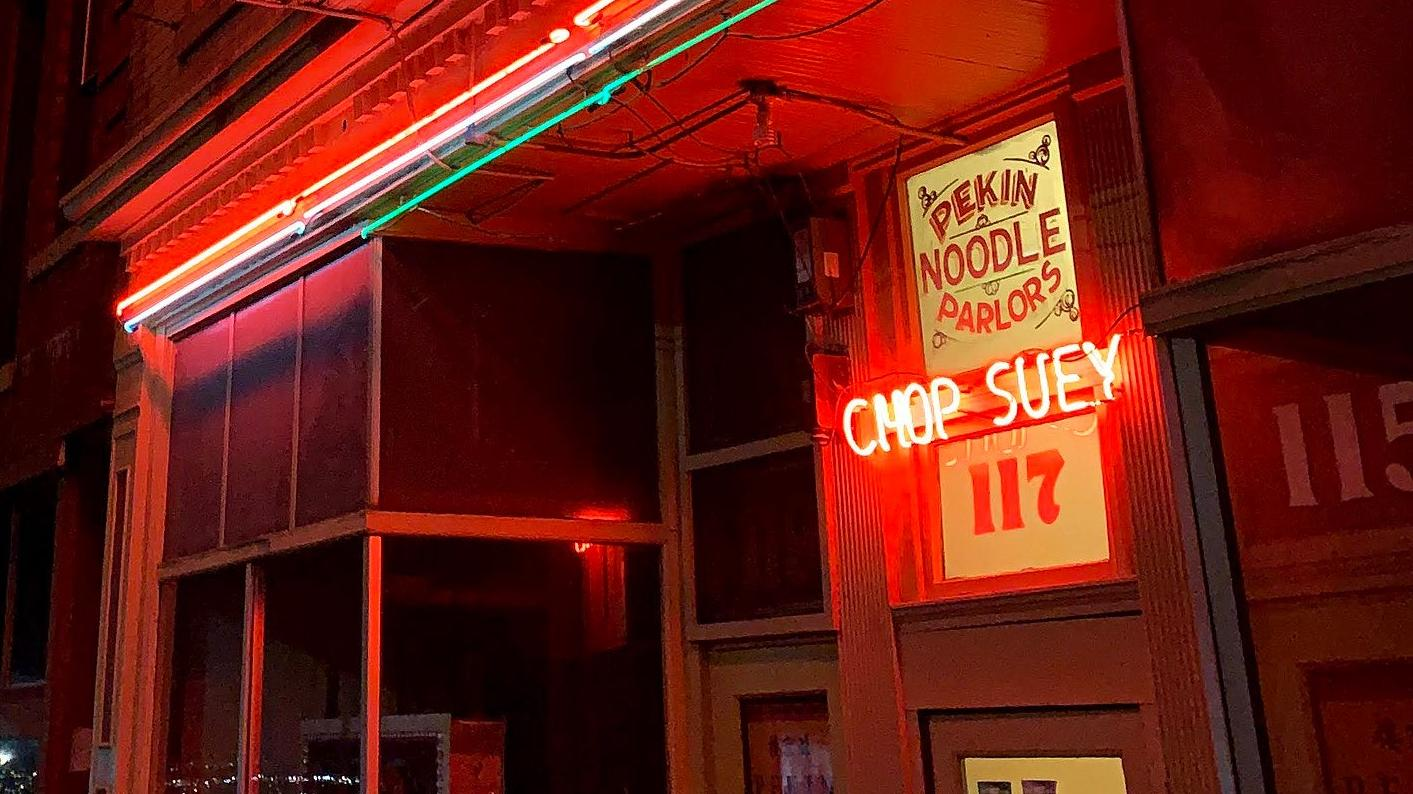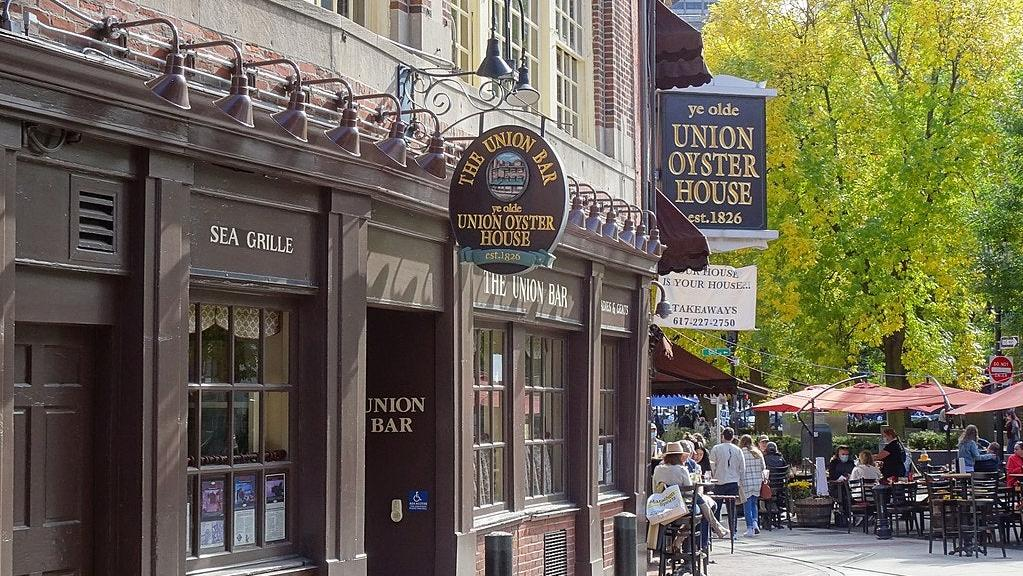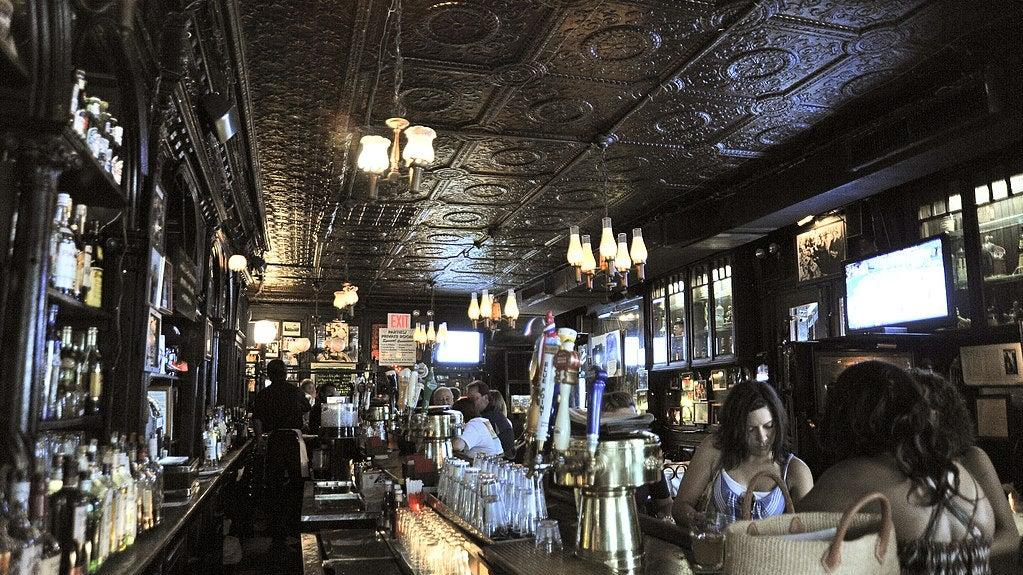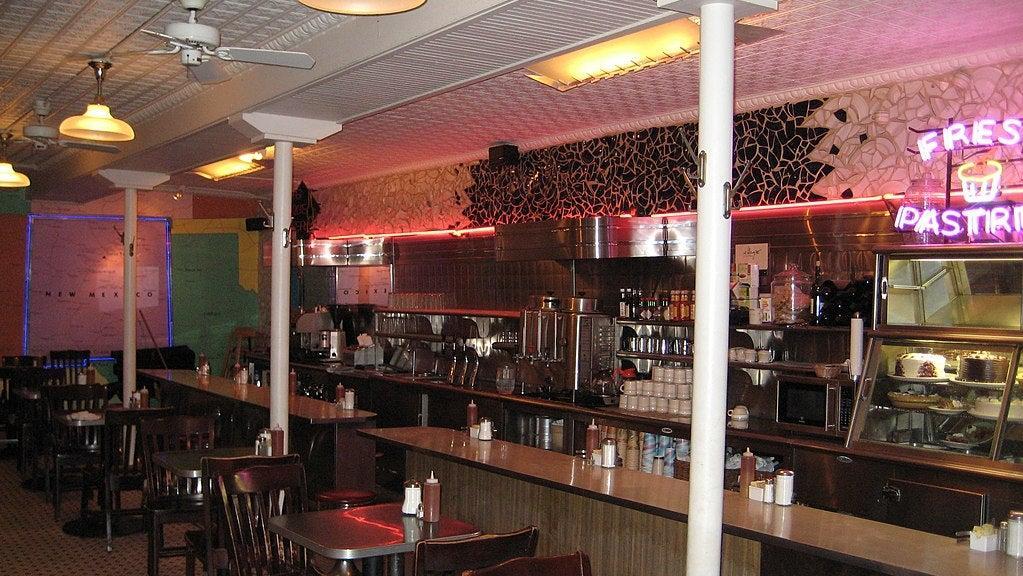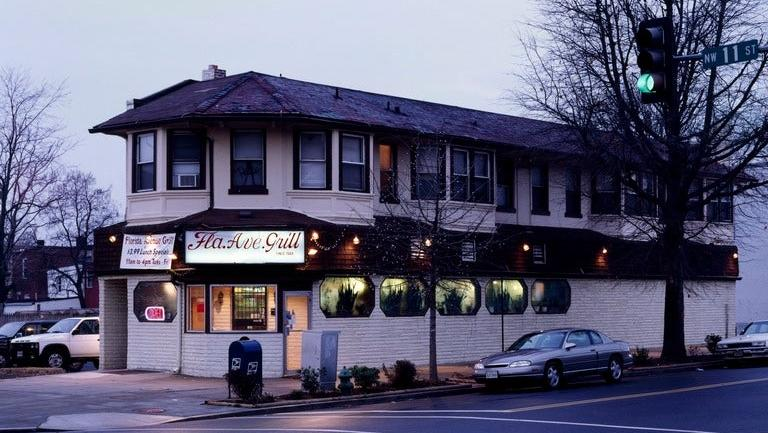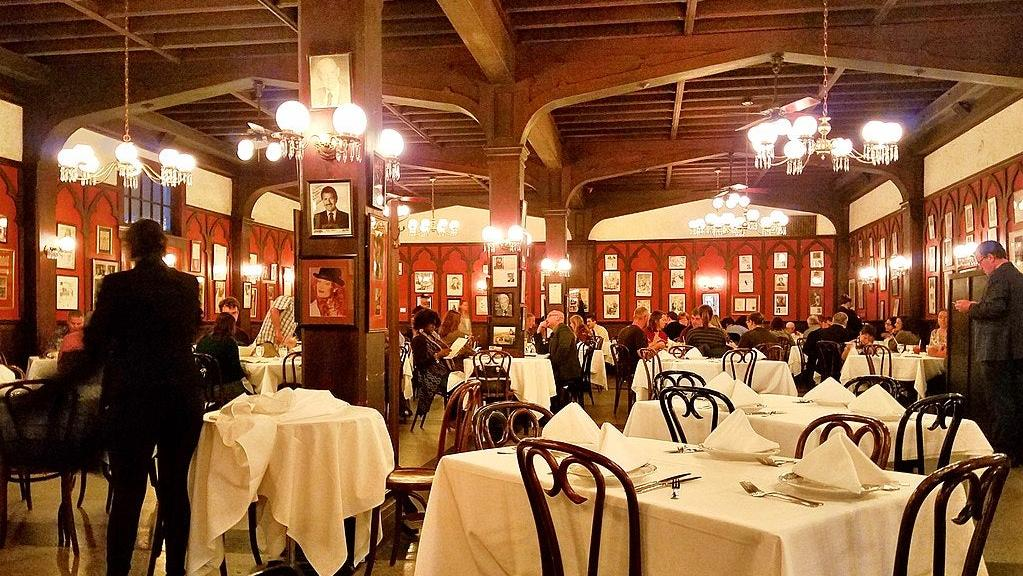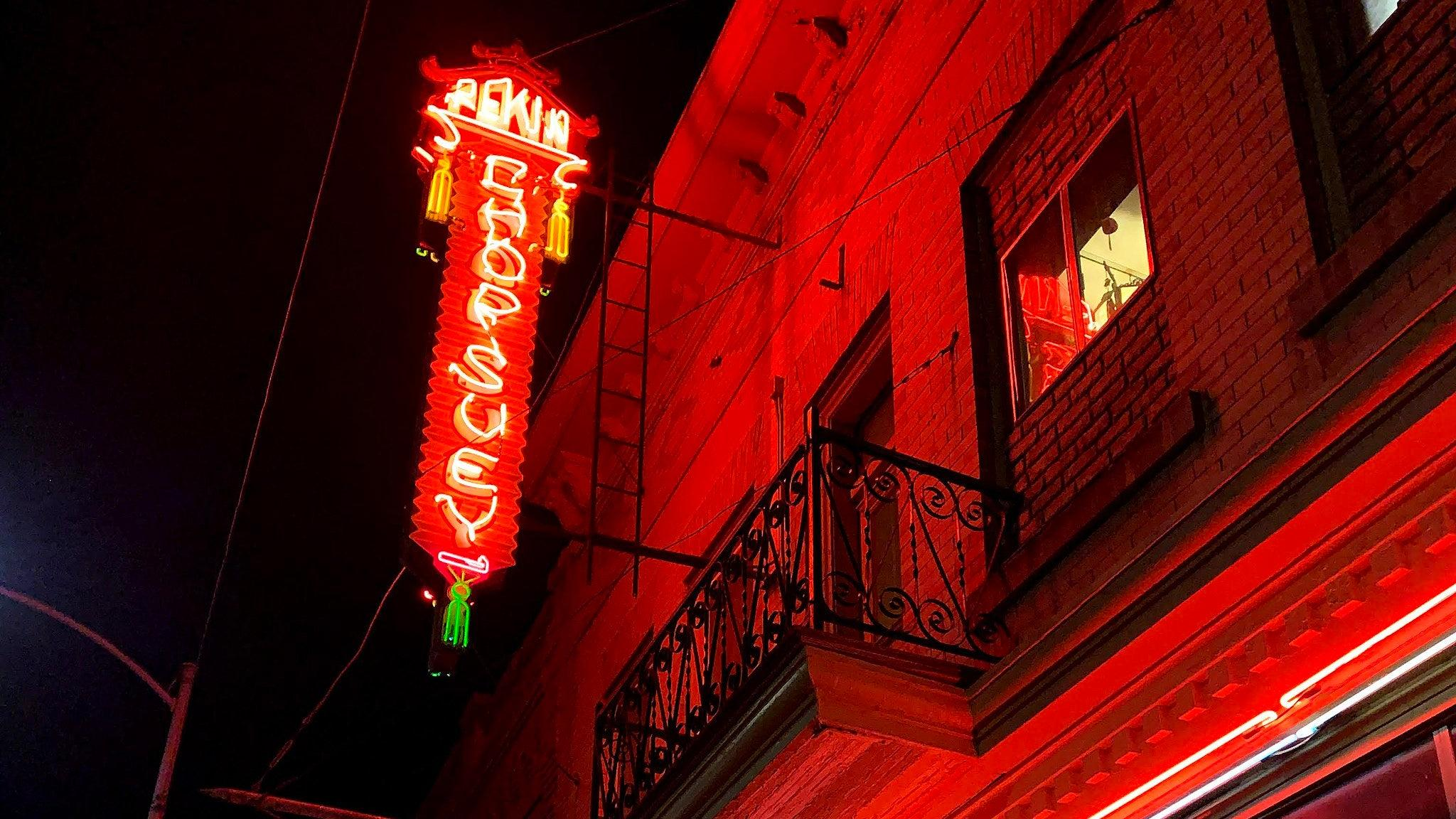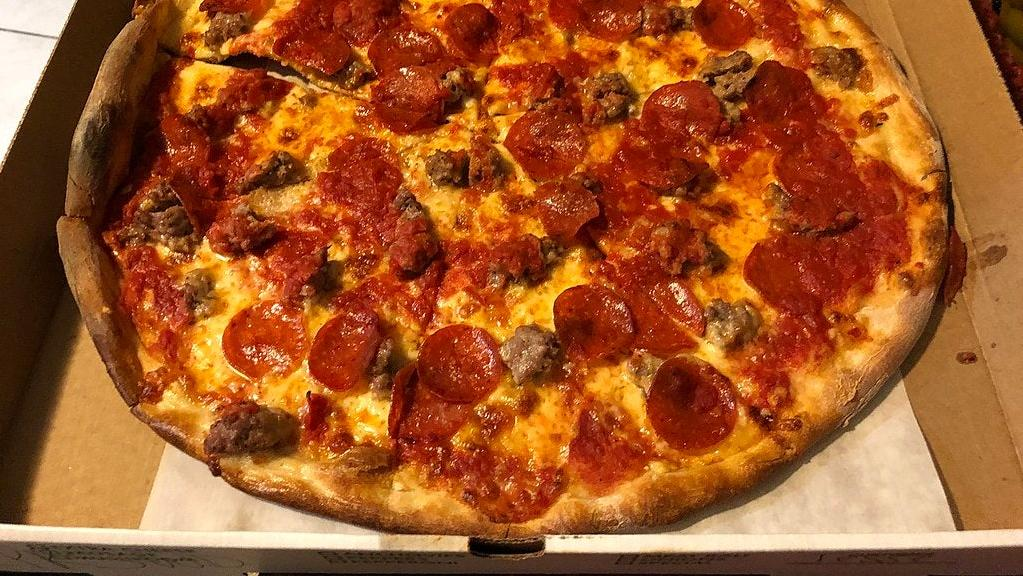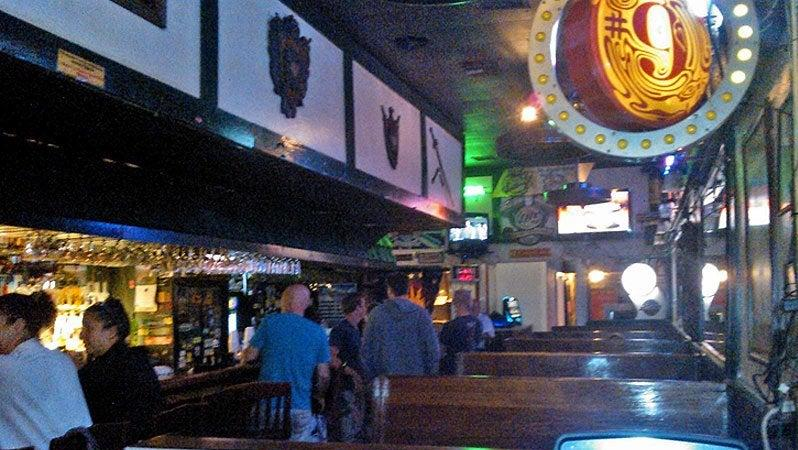8 Of America's Oldest Restaurants And The Stories Behind Them
Cuisine and history collide in these landmarks of American culture.
Isn't it amazing that of all the eras of human history into which we might have been born, we scored the one where we get to dine at restaurants? For millions of years, if you were hungry, you had to fend for yourself. The modern restaurant has only been around for the blink of an eye, evolutionarily speaking, but we've certainly made the most that time.
In many ways, restaurants are the convergence of ancient rituals (gathering around food) and modern technology (refrigeration, transportation, mass production). Opening a restaurant is one of the most notoriously difficult ventures one can undertake. But keeping a restaurant open? That's a whole separate equation.
What follows are eight restaurants that have defied the odds and stayed open across the decades and centuries. These historic establishments point to the ways in which America has grown and changed since they first opened—and they paint a picture of who was allowed to shape our dining scene versus who wasn't. Here's a list of some impressively old restaurants that have helped define American cuisine and culture.
Union Oyster House (Boston)
If this were Family Feud and I was in the Fast Money section and Steve Harvey asked me to "name a state with a really old restaurant," my first thought is going to the colonial East Coast. English colonists weren't the first Europeans in the territory that would come to be known as the United States, but their influence looms large in our nation's self-conception.
Boston is home to the oldest continually operating restaurant in America, the Union Oyster House, which opened its doors in 1826 and hasn't closed them since. The building that houses the restaurant was completed in 1714. Being so old, the establishment doesn't just offer seafood. It's got ghosts, too.
According to a Boston ghost tour's website, the spirit of John F. Kennedy haunts the joint—he's even been spotted hanging out in the bathrooms. You're telling me the most famously Irish-American city in the country is haunted by history's most famous Irish-American? Real believable, pal. Yeah, if I ran the place, I'm sure I'd "see" J.F.K. too.
Pete’s Tavern (New York City)
New York has a few restaurants infused with Colonial history, and some of them have closed, reopened, and rebranded. Fraunces Tavern, which is part restaurant, part national landmark, has been open since the days when George Washington was walking around the city (though it's been largely rebuilt since then).
The oldest still-operating joint is a tavern named Pete's, opened in 1864. Ludwig Bemelmans wrote Madeline at Pete's, and American short story writer O. Henry was a regular there too. The man was prolific: When he wasn't defining the literary canon, he was defining the candy aisle with his signature chocolate bar, the Oh! Henry.
Plaza Cafe (Santa Fe)
Santa Fe is the oldest state capital in the United States, formally founded in 1610. Before the Spanish brutalized their way across the continent, the Pueblo people had been living near and around present-day Santa Fe for hundreds of years due to its proximity to a tributary of the Rio Grande.
The first Spanish governor of Santa Fe de Nuevo México was such a tyrant that he was found guilty of cruelty by the Spanish government and banished for life. (Look up the Acoma Massacre. This guy was so fucked up that even the Spanish couldn't let it slide. The Spanish!)
There are two restaurants that both claim to be the oldest in the city. First, there is the Plaza Cafe, which claims to be the oldest restaurant: Opened in 1905, this diner has been serving New Mexican specialties in its current iteration since 1947. Then there's El Farol, a tapas place that, according to its website, has "provided locals and visitors over a century of memorable experiences since 1835." Well, what the hell does that mean? Sounds like the Plaza wins this round.
Florida Ave. Grill (Washington, DC)
Florida Avenue Grill has been serving customers since 1944. The restaurant was created by Lacey C. Wilson Sr. and his wife Bertha.
"Lacey envisioned a place where blacks could come and enjoy a meal comfortably without being harassed during a time where the nation was filled with racial tension," reads the restaurant's website. Southern Black cooking is a bedrock of American cuisine, combining African foodways with the ingredients of the New World. The Florida Avenue Grill is the oldest standing testament to that culinary tradition.
It is said that in its early, lean years, the Grill operated "two chickens at a time," meaning that the money Lacey and Bertha received for frying two chickens went, literally, toward buying two more. This restaurant is a DC institution, providing a space for the city's working-class population, Black and otherwise. Everyone from Martin Luther King Jr. and Kwame Ture to the memebers of Earth, Wind & Fire have eaten here, and they have had only incredible things to say.
Well, all but one. According to Lacey Wilson's Washington Post obituary in 1989, "The one celebrity that caused some trouble was the noted civil rights activist, comic and vegetarian Dick Gregory. One of the staff told The Washington Post that Gregory finally dined on pickled beets, iceberg lettuce and tomatoes."
Antoine’s (New Orleans)
Antoine's in New Orleans is a French-Creole restaurant that has been around since 1840. The iconic establishment has helped to define Louisiana's complex culinary history, which combines European, African, and Native American components in ways few other American cities' dining scenes can.
One item popularized by Antoine's is Oysters Rockefeller, so named because the richness of the dish's buttery sauce matched the wealth of John D. himself, everyone's favorite business tycoon. That's like if a restaurant today named a menu item "Shrimp Bezos." I don't think I'd order that, but Salmon a la Larry Ellison might entice me.
Pekin Noodle Parlor (Butte, Montana)
The oldest continually operating Chinese restaurant in America was founded in 1909 in Butte, Montana—yes, you read that right. While San Francisco is home to Sam Wo, a restaurant that opened in 1907, that establishment closed in 2012 and then reopened in 2015. Sam Wo will always bring a smile to my face, though, as it was the workplace of Edsel Ford Fong, famous for being the "World's Rudest Waiter," aka the coolest guy who ever lived.
Anyway, back to Montana. Butte's Chinatown thrived by accommodating the migrants who had moved from across the Pacific to try their luck in Western gold mines. According to the Smithsonian, "The 1870 census counted nearly 2,000 Chinese residents in Montana, or 10 percent of the territory's population. By comparison, the same census counted a mere 500 or so Chinese immigrants in New York City."
The white colonists in what would become Montana (and elsewhere across the country) did not appreciate the growing Chinese community. One infamous attempt by the government to restrict immigration was 1882's Chinese Exclusion Act, which specifically barred Chinese laborers from entering America. Pekin Noodle Bar was an early progenitor of what would become Chinese-American food, and it is still slinging chop suey to this day. To top it off, the basement of the restaurant hosted illegal gambling until the 1950s.
Papa’s Tomato Pies (Robbinsville, New Jersey)
Located outside Trenton near the Pennsylvania border, Papa's Tomato Pies is the oldest pizzeria in America. The spot's been around since 1912 where it began in Trenton, although it moved out of Trenton proper to Robbinsville in 2013. So its status as the oldest pizza restaurant is a bit of a technicality, but it's been owned by the same family since the beginning, and that definitely counts for something.
Still, it sounds like Robbinsville should be on your agenda if you find yourself in central Jersey or eastern PA needing a pizza. Trenton-style pizza is when ingredients are added to the dough before the sauce. Perusing their website, I am most compelled by a pizza they have called a "Mustard Pie", which they claim is a local delicacy. It is spicy brown mustard, spread on the dough before it's baked. It sounds incredible.
St. George Tavern (St. Augustine, Florida)
The oldest city founded by Europeans in America, St. Augustine has weathered its fair share of... well, weather. So it doesn't have as much built history as one might expect from a fort started in 1565 by the Spanish. Englishman Francis Drake burned the fort down in 1586. A massive hurricane in 1811 wrecked the city, then in 1914, a fire destroyed a huge swath of downtown. All of this helps to explain why a bar built in 1941 is considered the "Oldest Pub in the Oldest City." Personally, I like the designation, which the bar itself claims. It's marketing, sure, but it's also a way to teach the city's history, which can get overlooked.
